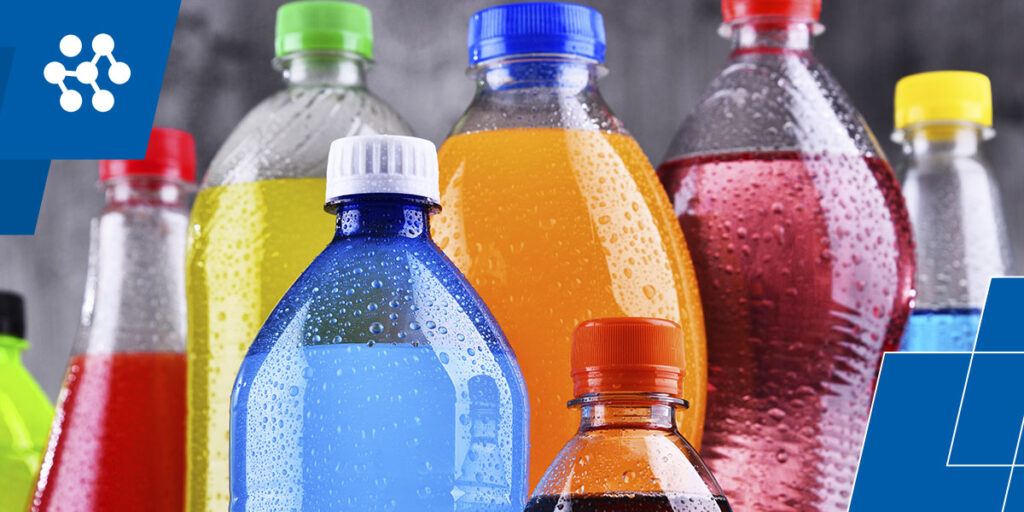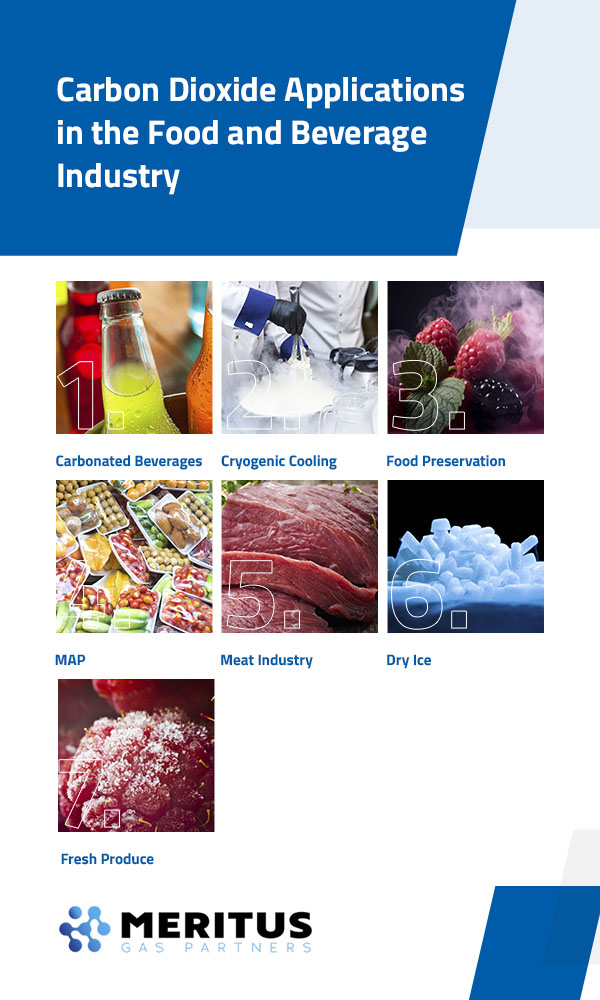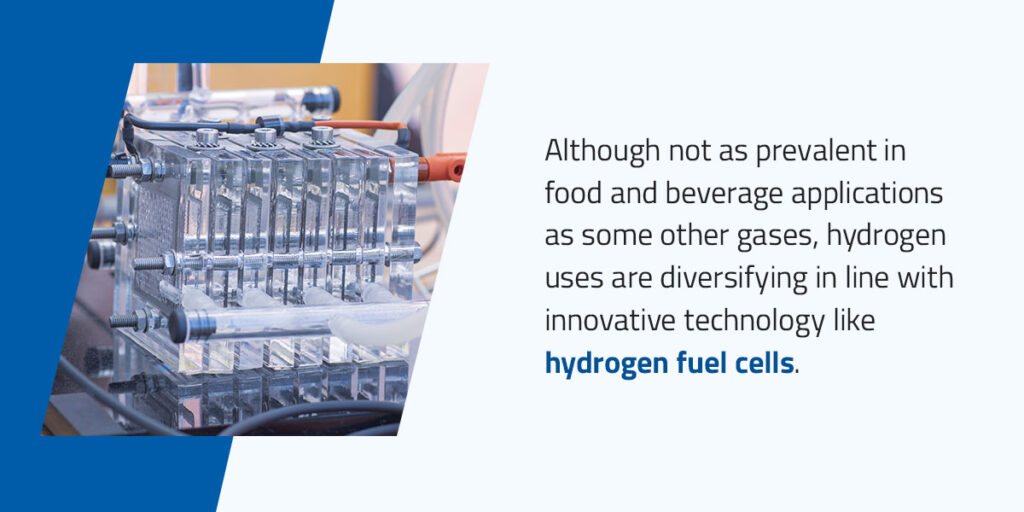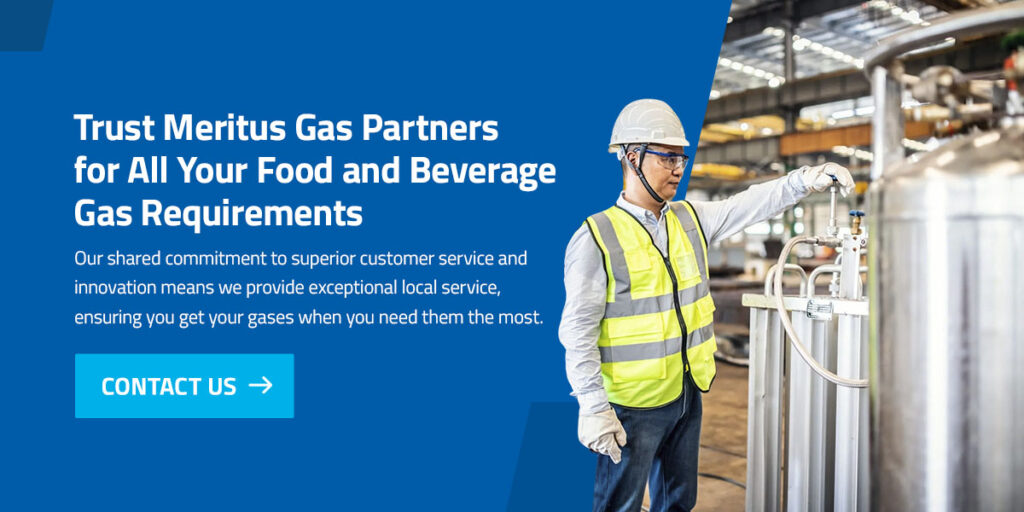

The food and beverage industry has undergone significant transformations in recent years. Increased nutritional and sustainability awareness has resulted in a heightened demand for effective and natural food and beverage preservation alternatives. In the food and beverage industry, gas is proving a practical option. Innovative packaging, preservation, cooling and water treatment techniques are critical to meet growing consumer demands.
The United States produced 36,353,023 million cubic feet of natural gases in 2022 alone. If you’re involved in any food and beverage business, using the right gases can revolutionize your operations, providing various efficient and cost-effective options that satisfy consumers and boost your bottom line.
The food and beverage industry has enjoyed the benefits of industrial and natural gases for decades. Over the years, customer expectations around the freshness and nutrient quality in packaged foods have changed. Gases continued to ensure high food quality and cost savings for food and beverage manufacturers. Innovations like modified atmosphere packaging (MAP) allow for the preservation of minimally processed foods such as fish, meat and fresh produce.
Gases solve many food and beverage challenges, such as adequate transportation, processing costs and meeting consumer demands. Food industry gas can freeze foods in minutes instead of hours, maintaining their moisture, texture and flavor. They can facilitate the storage and transportation of fragile foods, enhance the texture and taste of many beverages and even provide alternative energy solutions for processing, serving and selling various products.
Food-grade gases are a category of industrial gas purpose manufactured for the food and beverage industry. They are common in the manufacturing, processing, handling, storage and sterilization of foods and beverages and are subject to stringent government regulations.
As they come into contact with food products, these gases must remain free of contaminants and be classified as high purity to be suitable for food and beverage applications. Although it depends on the specific gas, most food-grade options must be above 99% purity.
Gas in food creation and handling is limited to the following areas:
Aside from food storage, preparation and processing, non-food-grade gases are essential for restaurant owners and hoteliers. Liquified petroleum gas (LPG) is a non-toxic mixture of hydrocarbon gases, the most common being butane and propane. With the right mix of air and LPG, users can ignite the gas for cooking. It’s a growing phenomenon in food and beverage applications.
Compared to biogas, LPG is a clean fuel. It releases fewer pollutants than any fuel except electricity, making it safe for kitchens. It has lower greenhouse gas emissions than many other alternatives. LPG is used on gas stoves, cooktops and hot water systems.
Gases are common in the food and beverage industry, from the gas in food and drinks to the LPGs used for cooking. Each gas has its own properties and benefits in the food and beverage industry, the most common of which include:
Carbon dioxide (CO2) is one of the best-known gases in the food and beverage industry. It’s the fourth most abundant gas in the Earth’s atmosphere and is colorless, odorless, inert and non-toxic. Although best known for carbonating various beverages, it has several other applications. Some of its many uses include:

Nitrogen gas (N2) is ubiquitous in the food and beverage industry, occupying approximately 78% of the Earth’s atmosphere. It’s inexpensive, widely available and inert, making it a chemical-free alternative for several essential processes. There are many uses for nitrogen in food, from preserving freshness to limiting damage during transit. Some of the most common uses for nitrogen in food and beverage applications include:
Oxygen (O2) is becoming increasingly popular in the food and beverage industry. It’s an environmentally friendly alternative for many standard options and meets several regulatory standards. Food-grade oxygen has several health benefits and helps maintain the visual appeal of various food products, making them attractive to customers. Some typical uses of O2 include:

Hydrogen gas (H2) has diverse uses in the food and beverage industry, from food preservation to semi-solid fats. It’s the most abundant element on Earth. Although not as prevalent in food and beverage applications as some other gases, hydrogen uses are diversifying in line with innovative technology like hydrogen fuel cells. Some typical applications for hydrogen include:
Argon (Ar) is an inert, water-soluble gas with multiple applications across industries like health care, welding and manufacturing. It’s the third most abundant gas in the air, and essential in the food and beverage industry for the following applications:
Helium (He) is the smallest molecular gas of all the food gases. While it may be less familiar, it remains helpful in the food and beverage industry. Helium’s reduced dimensions allow it to exit containers through minuscule holes, so it’s often used to detect leaks in packaging.
Whether you’re well established or entering the food and beverage industry, getting quality food-grade gases is essential. As they’re used in the processing, preparation and storage of food and beverages, they’re subject to considerable scrutiny. You need an experienced and trustworthy supplier to ensure your operational profitability.
Find a Partner Near You
Consumer needs are changing, and increased nutritional awareness is sparking interest in healthy foods and drinks, most of which require food-grade gases to carbonate, preserve, deoxidize, store and transport. Choosing the right food and beverage gas supplier involves several considerations, including after-sale support, timeliness of orders and industry experience.
If your strategy involves healthy and sustainable options, your supplier should place the same value on contributing to the environment. Ask what steps your potential supplier has taken to minimize environmental impact in their processes. Establishing the availability of the various gases you require for your specific application is also critical, as running low and waiting for orders could result in costly downtime.
In a time of increasing health, ethics and sustainability, consumer views are rapidly evolving. The shift in consumer behavior is transforming food and beverage industry operations and allowing them to pay more attention to climate change issues. In line with the shift toward sustainability, regulation changes motivate food and beverage companies to take action and influence positive consumer choices.
Using gases is vital to successful food and beverage operations, and the future is likely to reveal a shift away from harmful emissions, paving the way for eco-friendly gases. Like many other industries, food and beverage operations stand to benefit from improving energy efficiency, precision and safety. Innovative technology like hydrogen fuel cells could pave the way for additional gas applications.

The food and beverage industry relies on gases for safe transportation and improved product quality. Natural gases support many food and beverage processes, allowing preservative-free and safe beverages while improving product longevity, flavor and appeal. Any business involved in this complex and dynamic industry needs a trusted supplier of specialty gases and food-grade products.
Meritus Gas Partners is a network of independently operated gas and welding supplies distributors positioned to support food and beverage industry demands. Food and beverage gas suppliers have vast experience in providing food-grade gases to businesses nationwide. Our shared commitment to superior customer service and innovation means we provide exceptional local service, ensuring you get your gases when you need them the most.
Feel free to visit your local branch and speak to an expert to learn how we can fulfill your business needs. Alternatively, contact us today, and we’ll be in touch to walk you through the purchasing process and answer any questions.